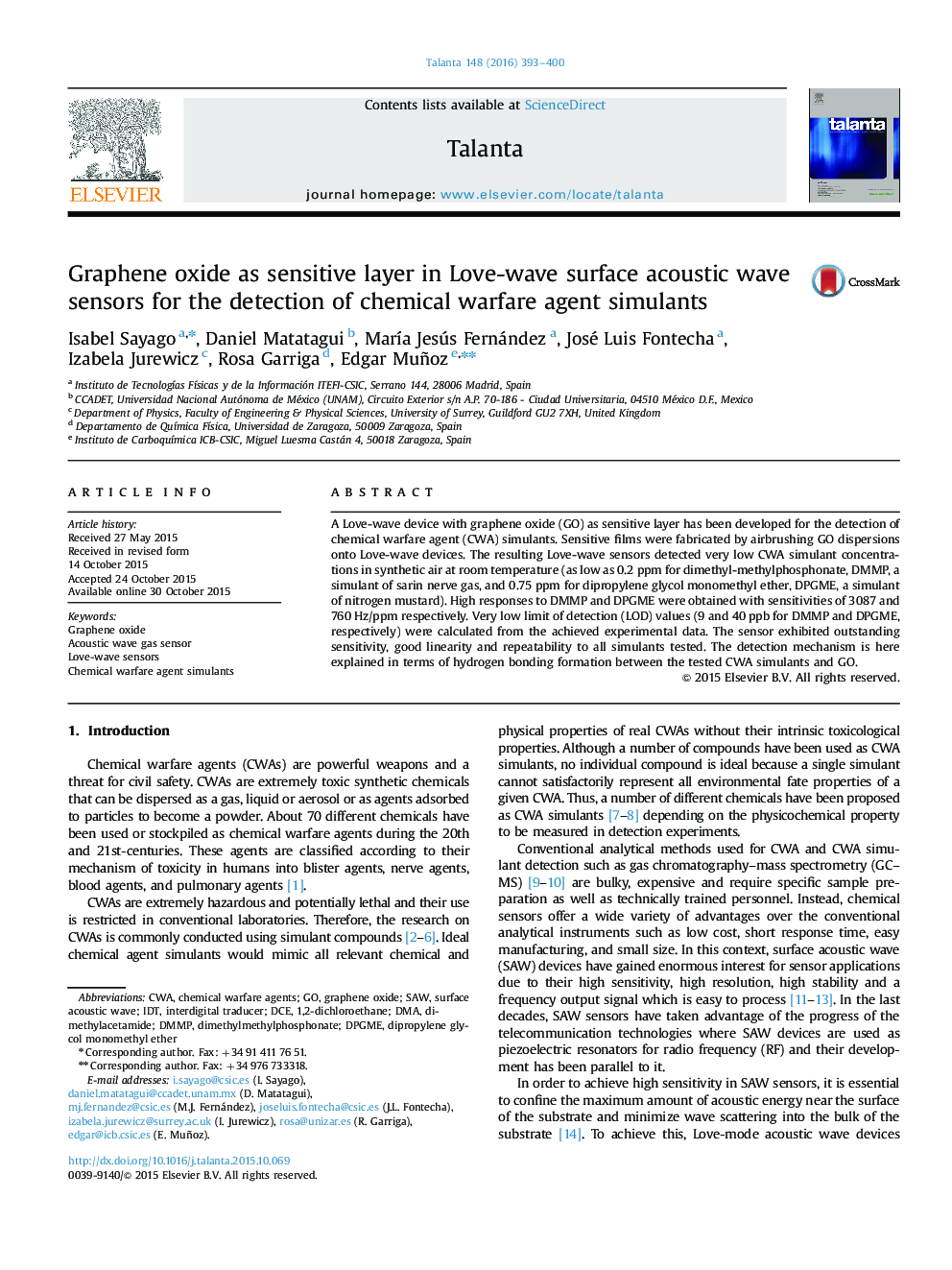| Article ID | Journal | Published Year | Pages | File Type |
|---|---|---|---|---|
| 1243800 | Talanta | 2016 | 8 Pages |
•Graphene oxide (GO) was tested as sensitive layer material in Love-wave sensors.•GO Love-wave sensors were used for detecting chemical warfare agent (CWA) simulants.•Sensors provided fast response and recovery times at RT to the tested CWA simulants.•Outstanding high responses to low DMMP- and DPGME concentrations were achieved.•The sensor response is due to hydrogen bond formation between the simulants and GO.
A Love-wave device with graphene oxide (GO) as sensitive layer has been developed for the detection of chemical warfare agent (CWA) simulants. Sensitive films were fabricated by airbrushing GO dispersions onto Love-wave devices. The resulting Love-wave sensors detected very low CWA simulant concentrations in synthetic air at room temperature (as low as 0.2 ppm for dimethyl-methylphosphonate, DMMP, a simulant of sarin nerve gas, and 0.75 ppm for dipropylene glycol monomethyl ether, DPGME, a simulant of nitrogen mustard). High responses to DMMP and DPGME were obtained with sensitivities of 3087 and 760 Hz/ppm respectively. Very low limit of detection (LOD) values (9 and 40 ppb for DMMP and DPGME, respectively) were calculated from the achieved experimental data. The sensor exhibited outstanding sensitivity, good linearity and repeatability to all simulants tested. The detection mechanism is here explained in terms of hydrogen bonding formation between the tested CWA simulants and GO.
Graphical abstractFigure optionsDownload full-size imageDownload as PowerPoint slide
